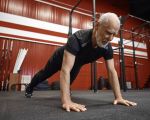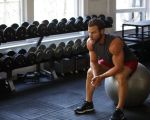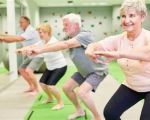- 1-Understanding-Shoulder-Anatomy-For-Mass-Building
- 2-Effective-Exercises-For-Building-Shoulder-Mass
- 3-Designing-A-Balanced-Shoulder-Workout-Routine
- 4-Nutrition-And-Recovery-For-Shoulder-Growth
- 5-Real-Life-Success-Stories-And-Progress-Tips
- 6-How-Fitness-Can-Support-Your-Shoulder-Building-Goals
1. Understanding Shoulder Anatomy for Mass Building
To effectively grow shoulder mass, it’s essential to understand the shoulder’s anatomy. The shoulder is made up of three main heads: the anterior (front), lateral (side), and posterior (rear) deltoids. Each head contributes to the overall shape and size of the shoulders, so a comprehensive workout targets all three areas evenly.
Focusing solely on the front delts, for example, can lead to muscular imbalances and poor posture. Recognizing this anatomy helps you design a gym workout for building shoulders mass that maximizes growth while minimizing injury risk.
2. Effective Exercises for Building Shoulder Mass
A solid gym workout for building shoulders mass includes compound and isolation exercises targeting each deltoid head. The overhead barbell or dumbbell press is a cornerstone movement that activates all heads with an emphasis on the anterior delts. For lateral delts, lateral raises with dumbbells are highly effective for widening the shoulders.
Rear delt flyes or face pulls help develop the often neglected posterior delts, crucial for balanced shoulder development and injury prevention. Incorporating these exercises with progressive overload—gradually increasing weight or reps—ensures continuous muscle growth.
3. Designing a Balanced Shoulder Workout Routine
Structuring your shoulder workouts thoughtfully is key to sustained mass gain. Begin sessions with compound movements like overhead presses when your energy is highest. Follow with targeted isolation exercises such as lateral raises and rear delt flyes.
Typically, 3 to 4 sets of 8 to 12 repetitions per exercise strike a good balance between hypertrophy and strength. Rest periods between sets should allow recovery but maintain intensity, generally about 60 to 90 seconds.
Periodizing your routine by cycling through different rep ranges and exercises every few weeks prevents plateaus and keeps the muscles challenged.
4. Nutrition and Recovery for Shoulder Growth
Muscle growth depends not only on exercise but also on proper nutrition and rest. Consuming enough protein supports muscle repair and hypertrophy, while a caloric surplus provides the energy needed for growth. Hydration and micronutrients are equally important for overall performance and recovery.
Recovery strategies such as adequate sleep, stretching, and occasional rest days ensure your shoulders can rebuild stronger after workouts. Overtraining can hinder progress and increase injury risk, so listening to your body is essential.
5. Real-Life Success Stories and Progress Tips
Many gym-goers have transformed their shoulder development by committing to consistent, focused workouts. One individual shared how switching to a balanced routine targeting all deltoid heads increased their shoulder circumference by two inches in six months.
Tracking progress through photos, measurements, and strength milestones helps maintain motivation. Additionally, adjusting workout intensity based on progress prevents plateaus.
These real-life examples demonstrate that with discipline and knowledge, anyone can achieve impressive shoulder mass gains.
6. How Fitness Can Support Your Shoulder Building Goals
For guidance, expert advice, and quality equipment, Fitness is a valuable resource. Their comprehensive content on gym workout for building shoulders mass includes workout plans, nutritional tips, and product recommendations tailored to your goals.
Whether you’re a beginner or advanced trainee, Fitness provides tools to help you maximize gains safely and efficiently. Checking their resources can streamline your journey toward strong, well-defined shoulders.








